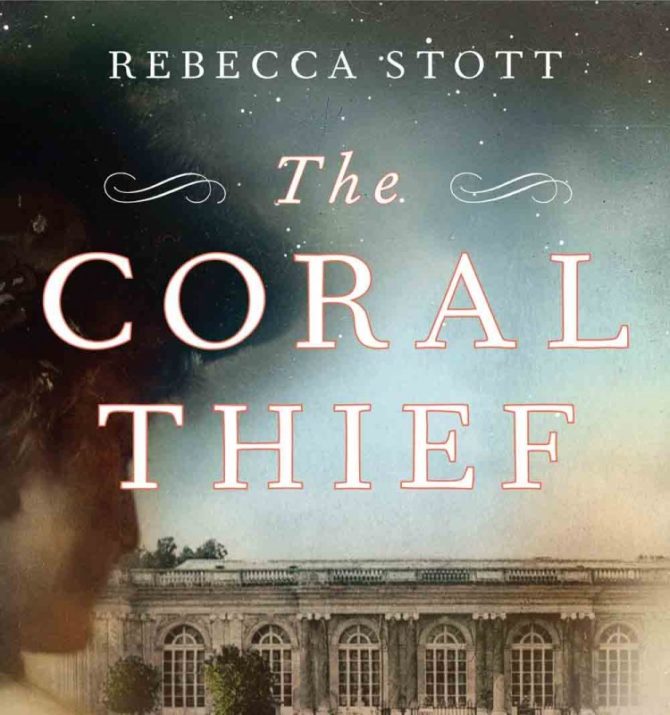The Coral Thief

Quantum physics and early evolutionary theory might seem like unpromising themes for novels, but Rebecca Stott is a brilliant storyteller who, twice now, has managed to weave philosophic concepts from bygone centuries into richly layered and compelling stories. In her debut novel, Ghostwalk, she used her hometown of Cambridge, England as the setting for a multiple murder mystery that moves back and forth in time between the present and the 17th century of Sir Isaac Newton. The ingenious plot, which combines alchemy and neuroscience, physics and psychics, a medieval fair and a modern love story, is a haunting tour de force, by turns menacingly dark and glittering with rainbows from Newton’s light-splitting prisms.
For her second novel, Stott turns her attention to 19th-century Paris. The Coral Thief begins just after Napoleon’s defeat at Waterloo, when the former emperor is being transported to exile in Saint Helena. As Napoleon is sailing away from France, Daniel Connor, an eager young medical student from Edinburgh, is heading for Paris by mail coach. Connor has landed a coveted six-month position as aide-naturaliste to Baron Georges Cuvier, director of the renowned Jardin des Plantes, where French professors were making groundbreaking discoveries in many fields of natural history. For his entrée into the scientific community he carries letters of introduction as well as a priceless manuscript, rare fossils and coral specimens entrusted to him by his professor. As night falls, he’s drawn into conversation with a fellow traveler, an exotically beautiful older woman traveling with her young daughter.
The woman, who is surprisingly knowledgeable about the intellectual climate at the Jardin des Plantes, fascinates Daniel by conjuring up an image of Paris in the geological past: “Picture it—giant sea lizards swimming around us, oysters and coral beneath us, creatures so strange we couldn’t possibly imagine them crawling across the seabed. Later, when the water retreated, the creatures pulled themselves onto the rocks to make new bodies with scales and fur and feathers. Mammoths wandered down from the hills to drink from the Seine, under the same moon as this one, calling to one another.”
His head filled with strange images, Daniel falls asleep, only to discover when waking at the entrance to the city that the woman, her daughter, and all his valuables have disappeared.
Devastated and unwilling to show up at the Jardin empty-handed, Daniel reports the crime to Henri Jagot at the Bureau de la Sûreté. Jagot (modeled on the real-life crook-turned-cop François Vidocq) identifies the woman as Lucienne Bernard, a notorious thief, and enlists Daniel’s help in finding her. But the more Daniel learns about her, first from her friends and finally, after tracking her down, from Lucienne herself, the more he realizes that nothing is quite what it seems.
Lucienne introduces him to a band of “philosopher-thieves” who are followers of Jean-Baptiste Lamarck, professor of zoology at the Jardin and proponent of transformisme, an early evolutionary theory radically opposed not only to the official viewpoint espoused by Cuvier, called fixisme, but also to the religious beliefs of the time. The classically trained Daniel, who was raised in a staunchly Presbyterian family, finds his world turning upside-down as he is seduced, first intellectually and then physically, by the fascinating Lucienne. Soon he is willingly drawn into an audacious plot involving Cuvier, the Jardin des Plantes and a famous diamond, while the dogged Jagot continues to hunt Lucienne with an obsession worthy of Javert.
Stott, a professor at the University of East Anglia, knows her subject. Among her several nonfiction books that make scientific ideas accessible to lay readers is a biography, Darwin and the Barnacle, focusing on the scientist’s life and work in the years just before his publication of The Origin of the Species—when he realized his “dangerous idea” was going to blow the scientific world apart.
In The Coral Thief she brilliantly recreates Paris in 1815, a period she describes as “a remarkable turning point—a vortex in history”. Museums, libraries and galleries were crammed with Napoleon’s plunder—not only art works and books but also unique natural history collections. With the city in turmoil after the emperor’s fall and the social and political hierarchy in chaos, Parisian intellectuals were freeing themselves from old ways of thinking.
The story ranges through the crooked streets of pre-Haussmann Paris and descends into the dark labyrinth of underground passages left over from its ancient quarries. But its main focus is the Jardin des Plantes, a fascinating place where even today the spirits of Lamarck and Cuvier linger in the Gallery of Paleontology, filled with a frightening army of skeletons, from tiny birds to towering dinosaurs—the raw material of all that 18th-century theorizing. In The Coral Thief Rebecca Stott has given us a rare treat—a page-turner that is also a novel of ideas.
The Coral Thief by Rebecca Stott. Spiegel & Grau, an imprint of Random House, 2009.
Originally published in the October 2009 issue of France Today.
Share to: Facebook Twitter LinkedIn Email



